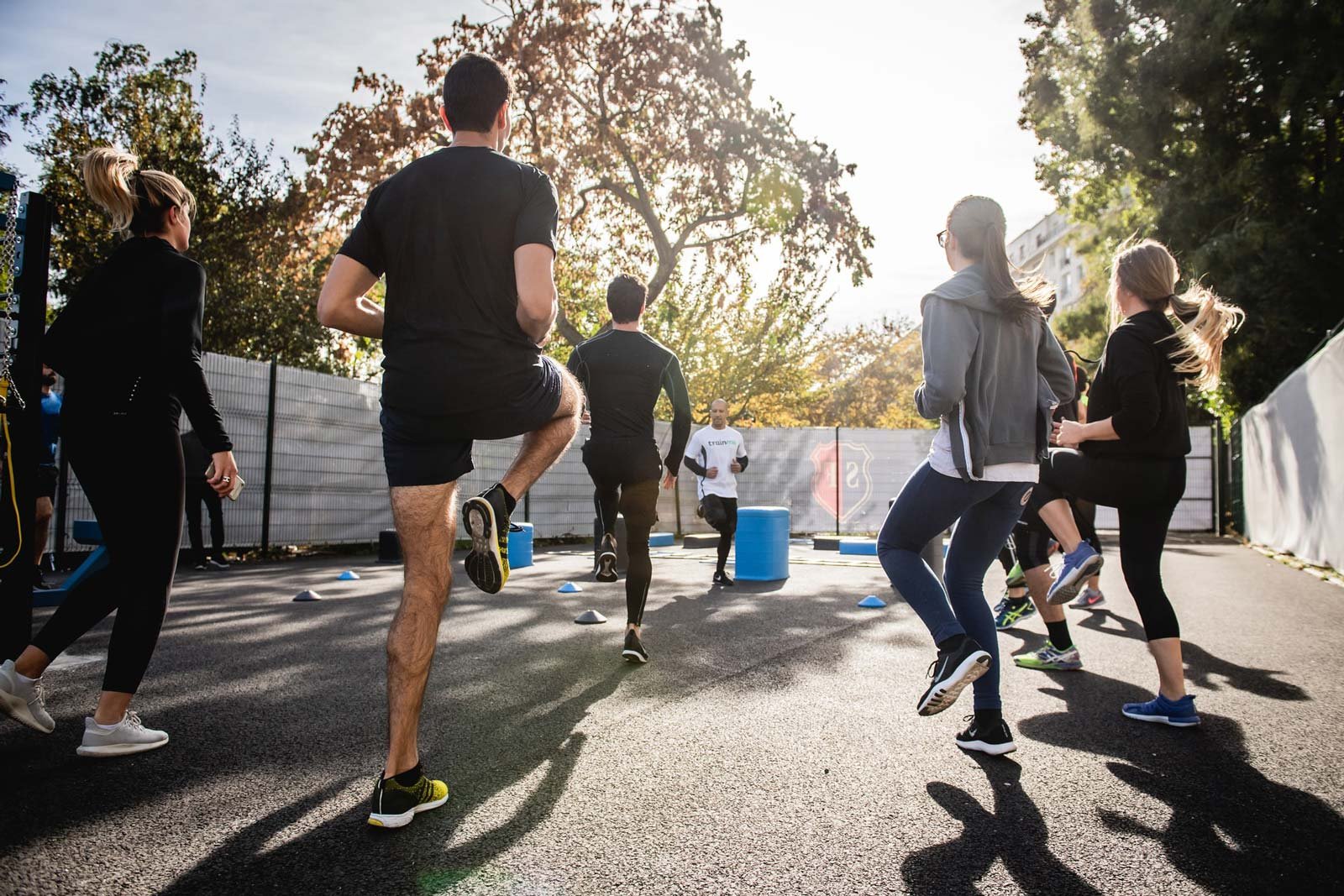
Which types of exercises will help your at-risk and prediabetic participants avert a health crisis?
Prediabetes leading to Type 2 diabetes takes a heavy toll on people’s health and quality of life, but simple lifestyle changes can provide significant protection against onset. Regular exercise has long been seen as a cure-all for a number of different health issues, and prediabetes is no different. The best part? It’s free.
No one needs a gym membership to incorporate exercise into their routine, but they do need commitment, focus, and accountability. Getting your participants to follow through with exercise suggestions means you’ll want to continuously highlight how activities like swimming or hiking can be what makes the difference in their long-term health and quality of life.
The goal is that your participants will find motivation when they see that preventing the tremendous strain diabetes puts on people’s bodies, wallets, and entire lives can sometimes be as simple as going for a walk every day.
While we never advise any coach to use shame or fear to motivate participants, being forthright with them is key. Follow up with suggestions and guidance — basically, solutions to the problems you’re talking about — to help them see that there’s reason to hope and to try. Incorporating group walks, or helping your participants find walking paths near their homes is an easy way to get started.
In this article, you’ll learn about the best exercises for diabetes prevention which can help stop prediabetes in its tracks, improve quality of life, and show that prevention really is the best medicine!
Exercise and Type 2 Diabetes
If your participants ask you, “Can Type 2 diabetes be prevented by diet and exercise?”, you can answer with a resounding “yes!” While healthy eating is the most critical factor, exercise is an essential aspect of diabetes prevention, as long as your participants choose to make it a regular part of their lives.
According to research from the Cleveland Clinic Journal of Medicine, exercise such as aerobics or strength training support many of our organs, including those that are responsible for regulating blood sugar, such as the pancreas. Plus, the body is more sensitive to insulin (which helps us stabilize blood sugar levels) for up to 96 hours after exercise.
Exercise can help us lose weight, which is great for preventing Type 2 diabetes since obesity is a significant contributing factor to the disease. Additionally, the body needs energy to exercise, and it diverts sugar from the bloodstream to the muscles for that energy. This means exercise resolves the issue of elevated blood sugar, which is a focal point for prediabetics to keep a close eye on. Since it also improves sensitivity to insulin, it helps insulin-related sugar uptake improve as well, giving it a second boost to protect the body from excess blood sugar.
Exercise also teaches the muscles to store excess sugars within them instead of in the bloodstream. Since our muscles have memory, the more we exercise, the more our muscles automatically store excess sugar. Building a habit of exercise is one of the most effective ways your participants can combat the onset of Type 2 diabetes. Let’s take a look at which forms of exercise are proven to be most effective.
Intermittent Movement and Walking to Prevent Diabetes
Whether it’s working at a desk, watching TV, or commuting to class, many Americans spend the majority of their days sitting. This sedentary lifestyle is connected to a host of diseases and is particularly important for people with Type 2 diabetes, prediabetes, or who are at risk for diabetic conditions.
A study from Diabetes Care found that people who sat for 5 hours after eating had a 24 percent greater spike in blood sugar than those who got up every 20 minutes. Sitting is seriously bad for you!
To combat this sedentary lifestyle, the American Diabetes Association created the “3 for 30” recommendation, which states that people should engage in three minutes of light physical activity for every thirty minutes they sit. This recommendation comes as an addition to regular moderate exercise throughout the week.
Keeping Your Participants Accountable & Motivated with Regular Movement Exercises
Consistent movement is essential for everyone, but it’s particularly important for those at risk for diabetes or prediabetes. According to the American Diabetes Association, reducing time spent sitting down is critical to blood sugar regulation. Extended sitting can lead to inefficient glycemic control and shifts in metabolism, independently of whether or not a person engages in regular exercise.
This means that even participants who hit the gym several times a week still need to get up and move every thirty minutes throughout the day. As their lifestyle coach, you’ll need to keep them accountable for that. Some people may complain that they simply can’t pry themselves away from their desks that often, and it’s all too easy to get stuck at the desk for extended periods.
The easiest way to keep on track with regular movement is by using a wearable like a Fitbit and setting hourly movement reminders. Activities don’t need to be complicated or even require leaving the desk! They include walking, torso twists, leg lifts, desk chair swivels, and side lunges. Each participant is different, so come up with personalized movement plans for your participants for what types of exercises they can incorporate throughout their day. If they don’t have access to wearable Fitbit - phone alarms or alarm clocks set at 1-hour interval reminders work too!
For example, you can advise participants to start with ten minutes of yoga after waking, a fifteen-minute work-break walk mid-morning, sit-ups or jumping jacks on their lunch break, and so on. Putting on music and dancing is also an excellent way to get moving throughout the day, and the great thing is it doesn’t feel like work. It’s fun!
Walking is another easy and enjoyable way to get regular exercise, and it’s available to almost everyone, regardless of their fitness levels. Even the most resistant client can get on board with regular walking, whether it’s opting to walk to the store instead of driving three blocks or going further to a park, beach, field, or local botanical garden.
Not only is all of this movement great for physical health, but it’s also incredible for mental, emotional, and spiritual health. It’s all too easy to get sucked into a computer screen for hours, responding to emails, working on projects, and getting lost in a whirlwind of thoughts and ideas. But we’re more than just our minds — we’re our bodies too. Intermittent movement can help participants connect to their senses, forget their to-do list, and move their body the way it was meant to move — consistently.

Strength Training and Type 2 Diabetes Prevention
Building muscle is key to normalizing blood sugar, as the body uses glucose for fuel. So if you perform strength training that targets all areas of the body, you’ll be lowering glucose throughout the body.
An increase in muscle mass throughout the body reduces the risk of developing diabetes by up to 32 percent, making strength training one of the most effective things you can do to address prediabetes. Yoga, pilates, and calisthenics all build muscle mass, as does weight lifting.
When coaching your participants, ask them to opt for weights with which they can easily do three sets of 15 to 20 reps. You’ll want to advise them to rest for 30 to 45 seconds in between each set.
Common strength building techniques include:
- Chest Presses
- Lat Pull-Downs using a machine or resistance bands
- Seated Shoulder Presses
- Tricep Kickbacks
- Biceps Curls
- Squats
- Lunges
- Deadlifts
You should encourage participants to incorporate weight lifting into their regimens a few days a week, with time off for rest in between. The rest of their exercise days should be spent doing high-intensity aerobics.
Don’t let them neglect either type — the Journal of the American Medical Association found that people with Type 2 diabetes who engaged in both aerobic conditioning and strength training cut blood sugar by a third more 34 percent versus 24 percent.
If you need help finding gym equipment, a gym to use, or free-standing weights - don’t hesitate to ask a question or create a post in the Realizing DPP community for lifestyle coaches.
High-Intensity Aerobics Benefits
Swimming, running, hiking, cycling, and dancing are all activities you can recommend for diabetes prevention. Ideally, people should get at least 30 minutes of high-impact aerobics three times per week, depending on their fitness levels.
Since combining strength training and aerobics has a particularly potent impact on blood sugar regulation and insulin resistance, exercises that tone muscles while providing an aerobic workout are particularly beneficial. So swimming, dancing, and Barre workouts are great options for those who are able to sustain high-intensity activities. All three tone the muscles throughout the body while also being highly aerobic.
A longer session isn’t always best either. Interval training is one of the best options for preventing or treating Type 2 diabetes. Researchers from the Western University of Ontario compared Type 2 diabetics who did vigorous exercise for 30 minutes a day vs. people who split the exercise into three 10-minute bursts per day, five days a week.
Splitting exercise up into smaller sections is a sustainable way to increase exercise time, and it is beneficial for those building up to a 30-minute workout three days a week. However, this study found that shorter bursts of exercise may be better for everyone.
Those who broke up their workouts had improved hemoglobin — an indication of blood sugar levels — twice as much as those who didn’t. Why? The jury’s still out, but some researchers think it's because interval training burns more fat and calories.
In addition, they dropped their LDL cholesterol levels and body mass index by three times as much. Plus, working out in short bursts can also help people maintain their regimen more easily. The researchers found that people who did short bursts ended up exercising about 100 minutes more per month than those who didn’t.
People weren’t meant to be sedentary, eat sugar with every meal, and exercise whenever the mood strikes them. We evolved to move, and we’re seeing that not moving has serious health consequences.

Help Prevent Type 2 Diabetes with Realizing DPP
Type 2 diabetes is a largely preventable illness. Exercise is one of the best ways to stave off prediabetes, reverse it, and improve overall well-being. Modern culture isn’t always conducive to regular movement and healthy living, so it takes a commitment.
The job of a lifestyle coach is to educate participants with compelling health information, inspire them to take action, and hold them accountable. With the right coach, participants can turn their health around and improve their quality of living.
Just like your participants need support, you can benefit from a support system of other lifestyle leaders. Our community is brimming with inspired, experienced coaches who draw from direct experience.
If you are a lifestyle coach based in Mississippi and are not enrolled in the Realizing DPP community, join us now — you’ll be happy you did!


